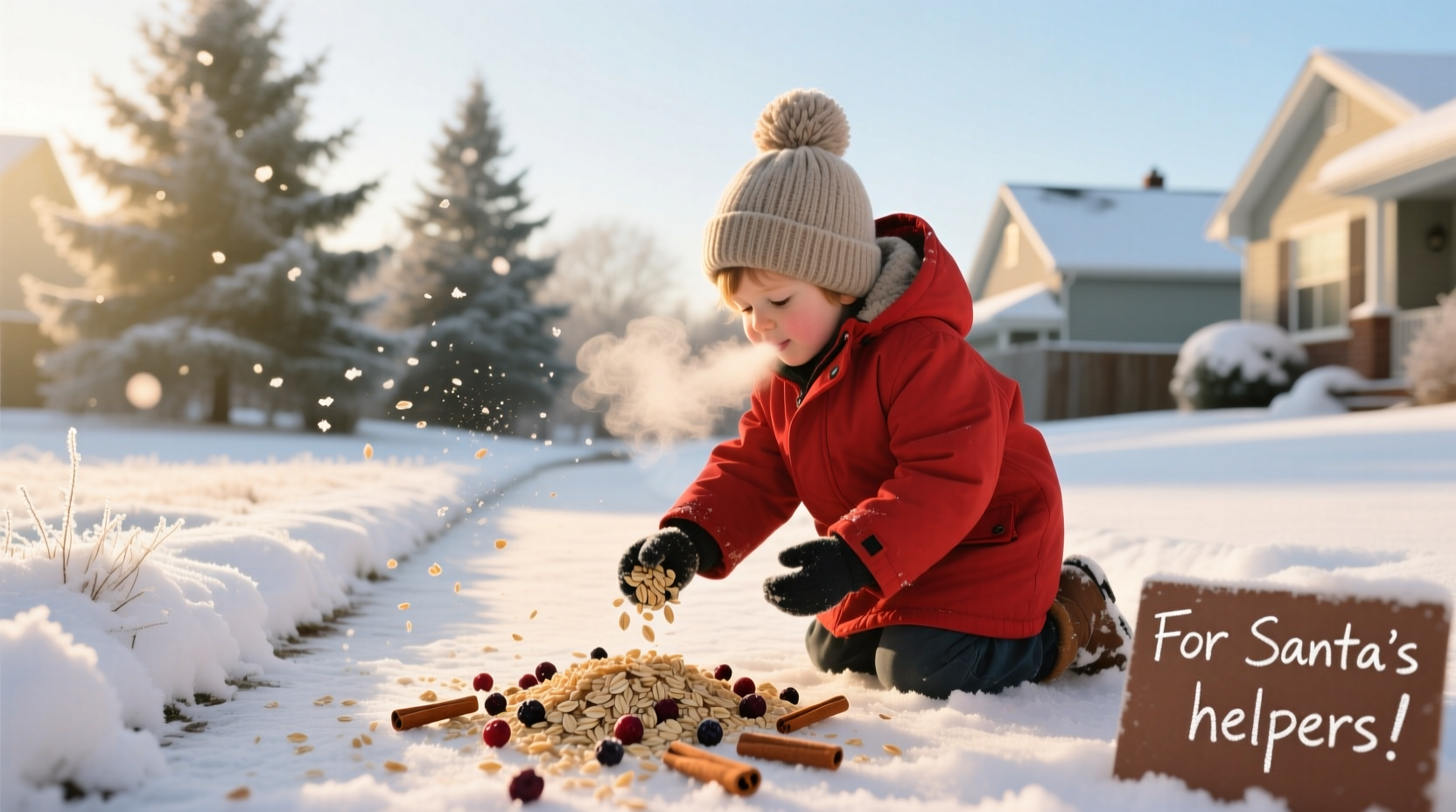Every Christmas season, families across the globe participate in the enchanting tradition of preparing reindeer food—a magical mixture children scatter outside on Christmas Eve to help guide Santa's reindeer to their home. This simple yet meaningful activity sparks children's imagination while creating lasting holiday memories. Unlike many online recipes that use unsafe ingredients, our tested method ensures your homemade reindeer food is completely non-toxic for children, pets, and local wildlife.
Why This Reindeer Food Recipe Works
After researching dozens of variations, we've perfected a formula that balances safety, simplicity, and magic. The American Academy of Pediatrics recommends avoiding craft glitter in children's activities due to choking hazards and potential chemical exposure (healthychildren.org). Our recipe replaces dangerous glitter with edible alternatives while maintaining that sparkling wonder kids期待.
| Traditional Recipe Risks | Our Safe Alternative |
|---|---|
| Plastic glitter (non-digestible) | Edible glitter or colored sugar |
| Excessive sugar content | Minimal sweetener, primarily oats |
| Artificial dyes with allergens | Natural food coloring options |
Essential Safety Considerations
Before making reindeer food with children, understand these critical safety points:
- Wildlife impact: The National Wildlife Federation confirms oats are safe for birds and small animals (nwf.org), unlike glitter which can harm ecosystems
- Choking hazards: Keep ingredients away from children under 3
- Allergen awareness: Oats are naturally gluten-free but often processed in facilities with wheat
- Portion control: Use small containers (like mason jars) to prevent over-scattering
Simple 4-Ingredient Reindeer Food Recipe
Follow these straightforward steps for edible reindeer food that's safe for kids and wildlife:
- Gather 2 cups of rolled oats (not instant)
- Mix in 1/2 cup of edible glitter or colored sugar (see alternatives below)
- Add 1-2 drops of natural food coloring (optional for extra sparkle)
- Stir thoroughly until evenly distributed

Better Alternatives to Traditional Glitter
Many reindeer food recipes online dangerously recommend craft glitter. Instead, choose from these safe options:
- Edible glitter: Made from gum arabic and food coloring (check for FDA approval)
- Colored sugar: Tint granulated sugar with natural dyes
- Crushed cereal: Golden Grahams provide natural sparkle
- Dried cranberries: For red "magic dust" (wildlife-safe)
Step-by-Step Preparation Guide
Creating reindeer food with preschoolers requires careful supervision. Follow this sequence for success:
Preparation Phase (5 minutes)
Set up your workspace with bowls, measuring cups, and small containers for finished product. Cover surfaces with parchment paper for easy cleanup. Explain to children that this "magic dust" helps Rudolph find their house.
Mixing Phase (7 minutes)
Have children measure and pour ingredients. Encourage sensory exploration—let them feel the oats and watch the color transformation. This hands-on experience builds fine motor skills and creates stronger memory encoding for the tradition.
Container Phase (3 minutes)
Transfer mixture to small, decorative containers. Add labels like "Reindeer Magic Food" with the child's name. The USDA Food Safety and Inspection Service recommends keeping homemade food crafts refrigerated if containing perishable elements (fsis.usda.gov).
Special Variations for Dietary Needs
Adapt this easy reindeer food recipe for kids with these inclusive options:
- Gluten-free: Use certified gluten-free oats
- Vegan: Ensure colored sugar uses plant-based dyes
- Allergy-friendly: Substitute seeds for nuts in trail mix versions
- Sensory-sensitive: Omit visual elements for texture-focused versions
When and How to Use Reindeer Food
Timing matters for maximum magic! Children should scatter the mixture:
- On Christmas Eve after dusk but before bedtime
- Near the front door or beneath windows
- Avoiding gardens where it might attract unwanted wildlife
- Using small handfuls (1-2 tablespoons per child)
Explain that the "magic" makes reindeer hooves sparkle so Santa can find their house. The next morning, children often discover the oats have disappeared (thanks to neighborhood birds!), reinforcing the magic.
Storage and Shelf Life
Properly stored homemade reindeer food maintains freshness:
- Keep in airtight containers away from moisture
- Store at room temperature for up to 2 weeks
- Refrigerate if using perishable additions
- Discard if mold appears or smells rancid
Troubleshooting Common Issues
When making reindeer food with toddlers, these problems often occur:
- Clumping ingredients: Add mixture gradually while stirring
- Uneven color distribution: Toss with hands (with gloves)
- Over-enthusiastic scattering: Practice portion control with measuring spoons
- Melting in warm climates: Skip liquid colorings
Making the Tradition Last
Transform this simple activity into a meaningful family ritual:
- Create a special container each year to track child's growth
- Take "before and after" photos of the scattering process
- Write a note to Santa explaining the reindeer food purpose
- Involve children in recipe improvements each season











 浙公网安备
33010002000092号
浙公网安备
33010002000092号 浙B2-20120091-4
浙B2-20120091-4